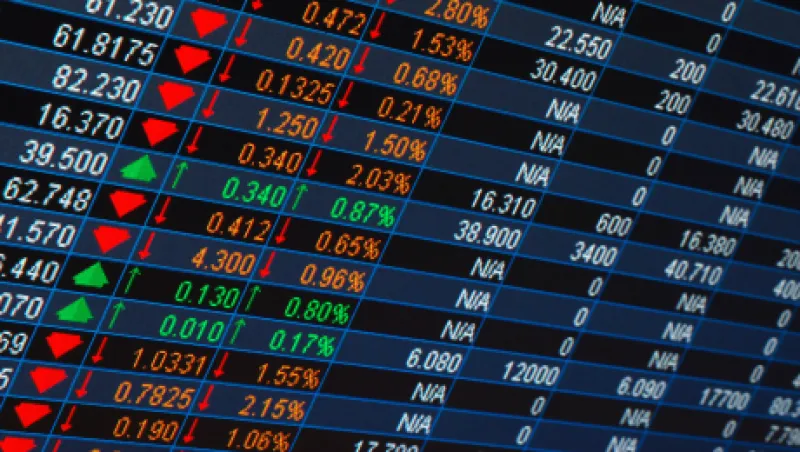For the U.S. stock market, it’s all about the economy.
After trading in a narrow range for the past two years, the S&P 500 has risen to a record high this week. For that rally to sustain itself, earnings, which have dropped for three straight quarters, will have to rebound. And for that to happen, strategists agree, economic growth must continue at a rate of at least about 2 percent.
“It’s all up to the economy,” says Gina Martin Adams, chief equity strategist at Wells Fargo Securities in New York, who sees a good chance for further gains. “It’s clear, oil prices are at least bottoming, which means the drag from oil-sensitive stocks is diminishing.” That leaves the onus on macro factors to push non–oil sector earnings to bolster market sentiment.
The S&P 500 closed at a record 2,152 on Tuesday. It moved mostly in a range between 1,850 and 2,135 from April 2014 until Monday.
As for the economy, analysts across Wall Street expect GDP to increase 2 to 2.5 percent for the next 12 months. Job growth is the key, as it generates consumer spending, which accounts for 70 percent of the economy, according to Jim McDonald, chief investment strategist at Northern Trust in Chicago. So far this year, nonfarm payrolls have averaged a monthly increase of 172,000.
A number of statistics point to continued economic growth. Wells Fargo’s Adams is particularly impressed with recent increases in the Institute for Supply Management manufacturing and service indexes. The ISM manufacturing index registered 53.2 in June, its highest since February 2015. And the services index posted its biggest monthly advance since 2008: to 56.5 from 52.9 in May. “These are some of the best indicators,” Adams says. “The fact that they’re improving gives hopes for earnings.”
Economists at PNC Bank expect GDP growth of just 1.8 percent this year. Even that rate, however, “makes us look like champs for the developed world” when compared with the euro zone and Japanese economies, says Eugene Stone, chief investment strategist at PNC Asset Management Group in Philadelphia. He’s optimistic stocks can rise moderately.
McDonald is particularly bullish. Northern Trust’s base case has earnings climbing 6 percent over the next year, combining with a 2 percent dividend yield to provide a total return of 8 percent for stocks. Northern Trust analysts predict economic growth of about 2 percent for the next 12 months. Whereas that represents a deceleration from the 2.4 percent rate of the past two years, “with the negative drag from commodities behind us, that will be well received,” McDonald says.
Not all analysts have that rosy a view, however. Tim Dreiling, regional investment director for U.S. Bank in Kansas City, Kansas, and his colleagues see stocks continuing to trade in a range, albeit one with a slightly higher top, of 1,850 to 2,200 for the S&P 500. Like many others, he says stronger earnings are needed if stocks are to rise substantially — and the economy will have to expand more than 2 percent for earnings growth to reach historical averages. On the negative side, he points out that new home sales fell 6 percent in May from April.
Dreiling sees valuations as stretched. The S&P 500’s forward price-earnings ratio registered 16.6 on Friday, well above the five-year average of 14.6 and the ten-year average of 14.3, according to FactSet Research Systems. Many analysts cite the fact that interest rates are at near-record lows, and that thus makes the comparison less relevant. “Interest rates matter,” Stone says. “I don’t believe rates will stay here, but if they do, stocks are way undervalued.” He notes that the S&P 500’s dividend yield of 2 percent far exceeds the recent 1.48 percent ten-year Treasury yield.
Wells Fargo’s Adams points out that the price-earnings ratio looks much different when one excludes energy-related shares: 15.9 on a trailing basis, compared with 17.2 for the overall S&P 500. “Looking forward 12 months, if energy normalizes, valuations aren’t so much of a hurdle,” he adds.
Get more on equities.







